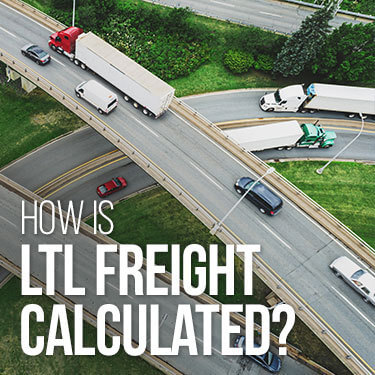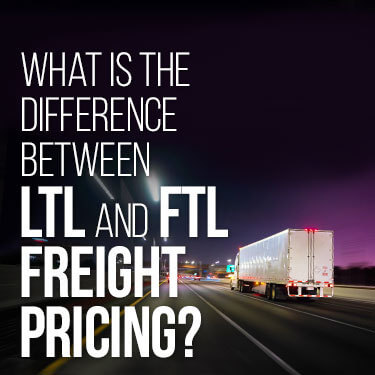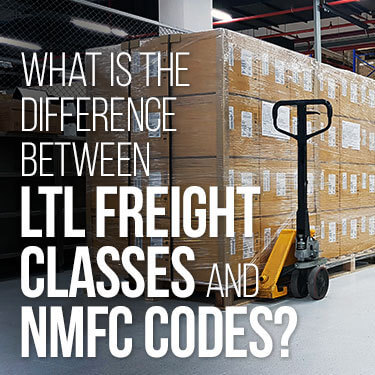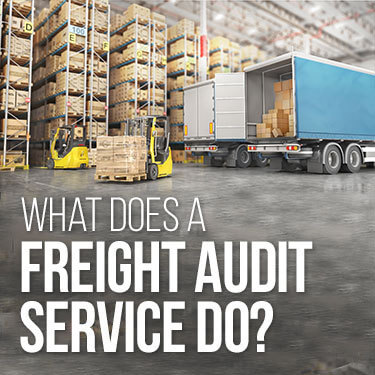LTL freight class affects one of the United States’ biggest industries: trucking transport. Our country keeps moving because there are hundreds of truck drivers on the road every day to make sure essential products get to where they’re needed. R+L Global Logistics has been in the trucking industry since the 1960s. We know the price to move goods keeps going up. We can help you understand LTL freight class so you can get the best price for your business shipping needs.
The National Motor Freight Traffic Association (NMFTA) is the organization that assigns items an LTL Freight Class. Freight Class is a measurement standard for setting base prices for LTL freight carriers in the United States. The 18 different classes determine transport tariff rates for pallets and crates based on density.
Keep reading for information on LTL freight classes that impact your business shipping needs.
LTL freight classification is a measurement standard for setting tariff rates for less-than-truckload shipments. Carriers set their prices for transporting pallets and crates around the country based on the different classes.
Freight classes standardize the cost of LTL freight shipping. All warehouses, carriers, and freight brokers in the United States use this system. The class system is essential for determining rates in LTL shipping because a variety of products could all be shipped on the same truck.
The NMFTA uses a set of metrics to classify shipments by transportability. Having common rates means that no one carrier can drastically underbid another. This keeps the trucking industry stable, especially when the cost of goods themselves keeps going up.
This is just one of the many benefits associated with LTL shipping in general.
An LTL freight class chart organizes freight into specific number categories. There are 18 freight classes. Density, or weight per cubic foot, is the first factor considered in a shipment’s ‘transportability’ rating.
It starts with class 50, sometimes called clean freight. Class 50 is the least expensive of the freight classes used for shipments with the greatest density. The system ends with class 500, which is the most expensive and used for shipments with either the lowest density or highest value.
In general terms, a shipment’s freight class is determined by looking at transportability. The ease of shipping depends on different metrics. There are four specific metrics used in the final classification.
The metrics for LTL Freight Class are:
Density is the biggest factor in determining a shipment’s class. Once the NMFTA classifies a type of shipment, it’s assigned a National Motor Freight Classification (NMFC) number. Businesses and carriers need to both be aware that a shipment’s NMFC number may not always be assigned to the same freight class.
The Commodity Classification Standards Board (CCSB) operates as part of the NMFTA. The CCSB publishes regular changes to keep freight class standards current. A shipment’s freight class may get changed up to three times a year if it falls under an NMFC code that is being amended.
This LTL freight class chart lists each class along with relative cost and density. The higher the class, the more expensive it will be to ship. The exception is for high-value items, such as gold dust or other precious metals. These items will ship at a higher freight class due to value regardless of density.
| LTL Freight Class | Sample Commodities | Density* |
| Class 50 | Bagged sand, rebar rods | 50+ lbs |
| Class 55 | Cinderblocks, wooden floor panels | 35 - 50 lbs |
| Class 60 | Sheet glass, Auto parts | 30 - 35 lbs |
| Class 65 | Boxed books and magazines, bottled water | 22.5 - 30 lbs |
| Class 70 | Engine blocks, rice | 15 - 22.5 lbs |
| Class 77.5 | Lighting fixtures, faucets | 13.5 - 15 lbs |
| Class 85 | Oilcloth, textiles | 12 - 13.5 lbs |
| Class 92.5 | Freezers, soup pouches | 10.5 - 12 lbs |
| Class 100 | Vehicle covers, furnaces | 9 - 10.5 lbs |
| Class 110 | Power tools, cabinetry | 8 - 9 lbs |
| Class 125 | Blenders, cameras, and video equipment | 7 - 8 lbs |
| Class 150 | Icemakers, espresso machines | 6 - 7 lbs |
| Class 175 | String and twine, toner cartridges | 5 - 6 lbs |
| Class 200 | Air conditioners, fishing poles | 4 - 5 lbs |
| Class 250 | Utility poles, oxygen canisters | 3 - 4 lbs |
| Class 300 | Waterbeds, window blinds | 2 - 3 lbs |
| Class 400 | Lightbulbs, coffee filters | 1 - 2 lbs |
| Class 500 | Wiffle balls, gold dust | <1 lb |
Most carriers consider the shipment’s density to be a significant factor in transporting. With higher-density items, more products can travel in a smaller space. This makes it more profitable for the driver and less expensive for the shipper. The lower the density, the higher the class, and the more expensive shipping will be.

Density is the initial indicator of LTL freight class. Many carriers base their rates on density, so it’s an important metric. The NMFTA also uses density first but then balances it out against a shipment’s ease of handling, liability, and stowability.
If you are trying to estimate shipping costs, you can calculate the item’s density to give you an idea of which class it might fall under. To find density, you divide the weight of a shipment by its cubic feet. Use the following equations to find cubic feet and then density.
First Calculate the cubic feet:
| Height x Width x Depth (inches) | Divide by total inches in a cubic foot | Cubic Ft. |
| 48 x 35 x 24 | 41,472 / 1,728 | 24 ft³ |
Calculate Density:
| Weight of Shipment (lbs) | Cubic Ft. (ft³) | Density |
| 75 | 24 | 3.125 lb/ft³ |
Based on a density of 3.125 lbs/ft³, it’s estimated to fall under freight class 250. There are various sites that provide a freight class calculator anyone can use to estimate their shipment’s density. If you are shipping multiple pallets or crates, each gets measured separately for the final density calculation.
Calculating accurate density happens after preparing items for shipping. If packages are being placed on pallets, factor in the pallet dimension. The same reasoning applies to crates.
To determine the official freight class, factor in ease of handling, liability, and stowability. These metrics become applicable after calculating density.
Each metric affects the final classification.
While other factors may get considered, these are the main ones used by the NMFTA.
Being able to calculate the estimated LTL freight class for your shipments is important for budgeting your business’ future. However, you should not rely on estimated calculations for classification. Officially, your carrier should use the NMFC code that has been set by the NMFTA. If your items ship under an inaccurate freight class, you could be paying more in fees and penalties.

The basic difference between LTL freight and FTL (full truckload) freight is that in LTL your cargo will share space with other deliveries. When using FTL shipping, your cargo will be the only one getting transported.
A full truckload is exactly that - using the entire trailer for one shipment. FTL shipping is often used when merchandise simply can’t share space with other cargo. This might be the case for regulated items or simply due to the amount or size of the merchandise.
For more information on shipping differences between FTL and LTL, check out our article, “FTL vs LTL Freight Shipping: What’s the Difference?”
Although LTL and FTL rates are both impacted by factors such as distance and fuel charges, estimating their shipping quotes is different.
LTL quotes rely on freight class standards. FTL has no class standards for different types of cargo and instead relies on a different set of metrics for pricing.
While shipping using LTL does tend to be less expensive than FTL, there will always be variables that may change that. The scope of your shipping needs may change as your business grows or consolidates.
When LTL carriers process quotes, they also take into account how much space a package is taking up. Although less dense loads with a higher freight class pay a higher tariff, they may also take up space otherwise used for other shipments.
To balance out possible lost profit, many LTL carriers establish a minimum cubic capacity rule. This is not an industry rule monitored by the NMFTA; each carrier may set its own standards.
The most common cubic capacity standards state that if a shipment takes up more than 750 cubic feet and has a density of 6 lbs/ft³, a surcharge may get added. Also known as density deficit, it applies to an entire shipment, not to individual pallets.
You may have four pallets that when measured separately, don’t reach that minimum. When added together, however, they do. Multiple pallets require a consolidated density calculation for final pricing.
Due to pandemic disruptions in shipping, freight capacity is tighter than ever. In extreme cases, a carrier may not accept your low-density shipment. The carrier might prioritize a smaller, high-density shipment so more orders can fit in the trailer.

Freight classes and NMFC codes both serve to determine the rate shippers will pay to move any given commodity. One doesn’t work without the other, but they are not the same.
Carriers use an NMFC code to find the assigned LTL Freight Class for a given product.
LTL freight class is a static measurement range of 18 freight classes. The density range for a particular class does not change. Class 50 will always consist of items with a density of 50 lbs/ft³ or more before adjustments due to other metrics.
NMFC codes are unique to products and are usually five to six digits long. There are thousands of NMFC codes to match up with the products shipped around the country. Once an item gets assigned an NMFC code, it is unlikely to change.
New codes do get added after updates to include new products or new packaging guidelines. At times, numbers may also get replaced if the products they identify become density-based.
See our conclusive guide on the differences between the two for a more in-depth look.
It’s CCSB policy to update the way NMFC codes rank products for their LTL freight class. One of the tools they use is an ongoing Density Study that collects information on real shipments. The collected data gets verified against existing NMFC codes for average weight and dimensions. Using this data, the CCSB analyzes whether it needs to classify freight differently.
If a product’s reported density is fluctuating widely in different shipments, it may get classified as a density-based item.
For example, road-making attachments came back with densities ranging from 1 lb/ft³ to 405 lb/ft³. That is a big difference for freight class purposes. The CCSB then set up groups based on density range and determined an average. After also applying their other metrics, each density group was assigned a different freight class.
| Density Group | Density Range (lbs/ft³) | Density Average(lbs/ft³) | LTL Freight Class After Considering Handling, Stowability, and Liability |
| Group 1 | 1 - 11.99 | 7.74 | 175 |
| Group 2 | 12 - 29.99 | 17.63 | 85 |
| Group 3 | 30 - 405 | 82.52 | 60 |
If it seems like group three has a significantly greater density range, remember that the LTL freight class chart begins with Class 50 at 50 lbs/ft³ or greater. The higher the density, the easier the freight calculations are. It’s the lower densities that have the greatest effect on pricing which is why those ranges are smaller.
Most carriers have an average weight limit on LTL shipments of 15,000 pounds. For heavier shipments, you may need to contract an FTL service.
The NMFTA maintains an NMFC Tariff catalog. Carriers have access to this catalog to look up NMFC codes for you.
You may also get your NMFC code directly from the NMFTA. The ClassIT® tool is an online version of the NMFC catalog you can access for a one-time fee or with purchase of a subscription.
The NMFTA operates the site directly, so their density calculators will be more accurate, especially when you are able to specify an NMFC code. You can also research the packaging regulations associated with a product.
Be aware that no matter how accurate your personal calculations are for LTL freight class, carriers reserve the right to make adjustments based on individual shipment needs.

A freight broker is a person or company that connects businesses needing to ship goods with carriers that can provide the necessary transportation. Brokers can work alone, or they may have a team of agents to represent them in specific regions or industries.
Quality freight brokers are good for the shipping industry because they help build connections between carriers and their customer base. If an LTL carrier is struggling to fill their trailers, a broker may be able to connect them with additional customers with suitable cargo.
The same is true of businesses that are needing to manage shipments. Whether new to the industry or not, working with a broker may help businesses avoid unnecessary expenses. These may be fees due to mistaken LTL freight class identification or errors in proper packing materials.
As a third-party logistics service, brokers may advise on the best carriers for your products, packing recommendations, and help re-route deliveries that get stuck due to unexpected circumstances. A broker may also be the best qualified to determine if your shipments should go through LTL or FTL services.

Freight audit services are another third-party service you can hire to double-check shipping documents for errors. Companies that make frequent use of trucking services often hire freight audit services to make sure errors are caught before fees kick in. A business may contract an audit service if it feels a carrier has made a mistake in its billing.
Audits will review documents for accuracy related to:
Errors in this information, whether they come from the business needing goods transported or the carrier taking on the shipment, can result in unexpected costs.
A well-done audit ensures you pay only for the services used. Overbilling or duplicate charges can be corrected and therefore avoided.
Transporting goods is expensive and costs keep going up, but keeping expenses manageable is possible. Businesses can reduce freight costs by having an in-depth understanding of their exact needs and by contracting with services that help them avoid errors.
Reduce freight costs by developing good record-keeping habits and following these guidelines:
Working with reputable carriers that are transparent with pricing and have a good record of delivery services is important. Even if LTL freight class is standard across the shipping industry, the quality of services provided will differ from company to company.
Carriers must comply with size and weight regulations set by the Federal Highway Administration. As part of the Department of Transportation, carriers violating these regulations are subject to fines at the state and federal levels.
If those fines come about due to carelessness on the part of the shipper due to inaccurate information, you can be sure they will pass the cost on to you in the form of extra fees.
Check out our article on freight rates for more information on how you can save money in the middle of rising costs.
Work with USA Truckload Shipping, powered by R+L Global Logistics, to meet your business and personal delivery needs. We have years of experience in the industry and a reputation for fast and accurate services.
Our team of transportation specialists will work to make sure your LTL freight class is accurate and that your items are packed away safely for the journey. We offer several services designed with the diverse needs of our customers in mind.
Available services include:
Get peace of mind with real-time freight visibility and our 99.5% on-time delivery success rate. Request a freight quote today and get your goods moving.
R+L Global Logistics
315 NE 14th St., Ocala, FL 34470